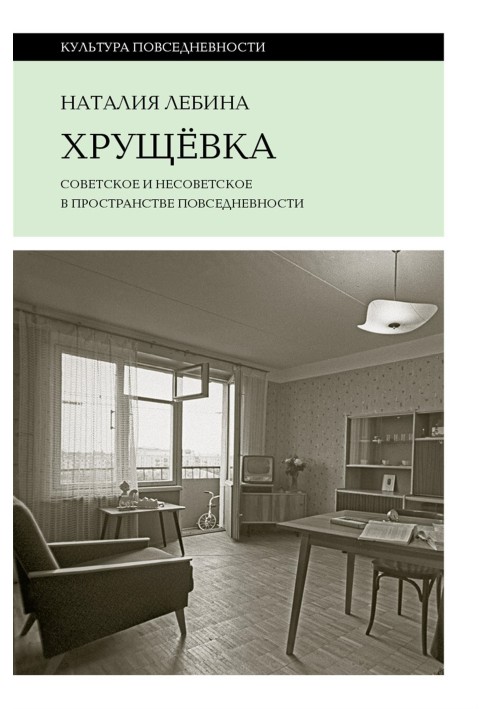Book Khrushchevka. Soviet and non-Soviet in the space of everyday life
According to official Soviet statistics, in the 1950s–1960s, 1205.2 million square meters of housing were built in the USSR: during this period, a new territorial and social organism was formed in the country. N. Lebina’s book is dedicated to the houses built during these years - the famous “Khrushchev buildings”, which still exist today. Considering this housing as a special cultural and everyday space of the Thaw era, the author studies the external appearance of these buildings, the forms of their internal structure, the substantive saturation of the new living space and shows how the life of a Soviet person has changed in the context of global trends in the modernization of everyday life. In this context, “Khrushchevka” appears as a unique Thaw phenomenon, in which the absurd is mixed with the creative, the funny with the optimistic, and the “Soviet” with the “non-Soviet.” Natalia Lebina – Doctor of Historical Sciences, researcher of Soviet everyday life, author of the books “Passengers of the Sausage Train”, “Soviet Everyday Life: Norms and Anomalies”, “Man and Woman”, etc.
- Name of the Author
- Наталия Лебина Борисовна
- Language
- Ukrainian
- Release date
- 2024


















05/18/2022
Вражаючий аналіз радянської архітектури та повсякденності!
Книга Наталії Лебіної "Хрущовка. Радянське та нерадянське у просторі повсякденності" є справжнім відкриттям для тих, хто цікавиться історією радянської архітектури та соціальної динаміки. Автор детально розглядає "хрущовки" як унікальний культурний феномен, що відображає епоху відлиги, і показує, як ці будівлі стали символом нового способу життя для мільйонів радянських людей. Лебіна майстерно поєднує архітектурний аналіз з соціологічними дослідженнями, що робить текст не лише інформативним, але й надзвичайно цікавим для читача. Вона вміло ілюструє, як зміни в архітектурі відображали зміни в суспільстві, і як "хрущовки" стали місцем, де зустрічаються радянське та нерадянське. Незважаючи на деякі недоліки в перекладі, які незначно впливають на сприйняття тексту, ця книга залишає глибоке враження і спонукає до роздумів про наше минуле. Рекомендую всім, хто хоче краще зрозуміти радянську повсякденність і архітектурну спадщину!